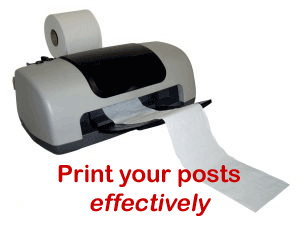 My first eBook, The Cheat's Guide to Customizing Blogger Templates, has been far more successful than I could have imagined. According to my hosting stats, this has been downloaded over 15,000 times since it's release (which astounds me!), and I've had loads of wonderful feedback about this.
My first eBook, The Cheat's Guide to Customizing Blogger Templates, has been far more successful than I could have imagined. According to my hosting stats, this has been downloaded over 15,000 times since it's release (which astounds me!), and I've had loads of wonderful feedback about this.
Now that my "offline" schedule is a little less busy, I've begun writing two new eBooks which will be available for download in the near future.
As before, these eBooks will be focused on the needs of those using Google Blogger to publish their blogs, and will be available for free download through this blog:
Choosing and Using a New Blogger Template
One of the most requested article suggestions for Blogger Buster is -
A step by step tutorial to change your Blogger template without screwing everything up! (via the Skribit widget)
While I have written a few tutorials in regard to this so far, I think a complete guide would span quite a few pages if written as a post.
So instead, I'm going to release this tutorial as a short eBook, with a few added bonuses which you won't find elsewhere.
I hope to have completed finished writing this within a week or two, and will distribute this directly from the site.
"The Blogger Book"
Okay, I admit I haven't conjured up a definitive title for this eBook yet, so any suggestions would be most welcome!
This eBook will be "the biggie": a compilation of useful information, tutorials and insight to help you build a better blog with Blogger.
I hope "the Blogger book" will appeal to Blogger users with all levels of experience, from those just beginning to use Blogger to those who have been blogging for some time! It will be about using Blogger in general (rather than focusing exclusively on one aspect of Blogger), with useful sections and tutorials that you won't find anywhere else online.
As you can imagine, this eBook will take significantly longer to write. So far, I'd guess this will be well over 100 pages long (perhaps closer to 200) and although I will be giving this ebook away for free, most likely this will be offered only to subscribers (as an incentive to subscribe to Blogger Buster).
What do you think about this? Would you still be interested in "the Blogger book" if I offer it only to subscribers?
Your suggestions are warmly welcomed!
If you have any suggestions for the content (or format) of either of these ebooks, I would really like to hear from you! Please feel free to write your comments below, I'd love to know your opinions and will be sure to consider any suggestions you may have.











